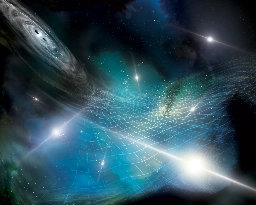Interesting read and kinda weird idea. There are other examples of "new" mathematics being employed to find representations of physics that lead to new, observable predictions... but not very many.
lol, no. Being able to do what I want with it is what I have appreciated. It's like having a computer without that obnoxious glue in the screws so you can take it apart if you want to.
This kind of thing is a huge part of why I fell in love with Linux so long ago.
I joined this instance after reading this post. My inclination is to operate my own instance; but it seems best to wait until some of the dust settles and some of the bugs get discovered and fixed, first. The admins here seem capable of doing just that, while providing a stable platform.
Greetings fellow scientists and interested others,
In the interest of furthering this instance's /c/science, am starting this post for people to interact with.
Who are you? What's your interest?
I'm a particle astrophysicist with a strong computational background. Overspecialization seems unwise, so I do a bit of everything inside the theory-experiment-compute space.
Decentralization has some advantages so let's make a good science community here at !science@lemm.ee .
Astrophysicists describe what galaxy-wide gravitational waves could mean for our understanding of black holes and the history of the cosmos.

Astrophysicists describe what galaxy-wide gravitational waves could mean for our understanding of black holes and the history of the cosmos.

Detection of the radio emission from the astronomical object in 1930+ by Karl Jansky started an era of Radio Astronomy followed by many discoveries enriching our understanding of the Universe we live in. Similarly, we are on the verge of opening a new window (ultra-low frequencies) in Gravitational ...
Detection of the radio emission from the astronomical object in 1930+ by Karl Jansky started an era of Radio Astronomy followed by many discoveries enriching our understanding of the Universe we live in. Similarly, we are on the verge of opening a new window (ultra-low frequencies) in Gravitational ...
Exotic stars called millisecond pulsars serve as celestial metronomes.


